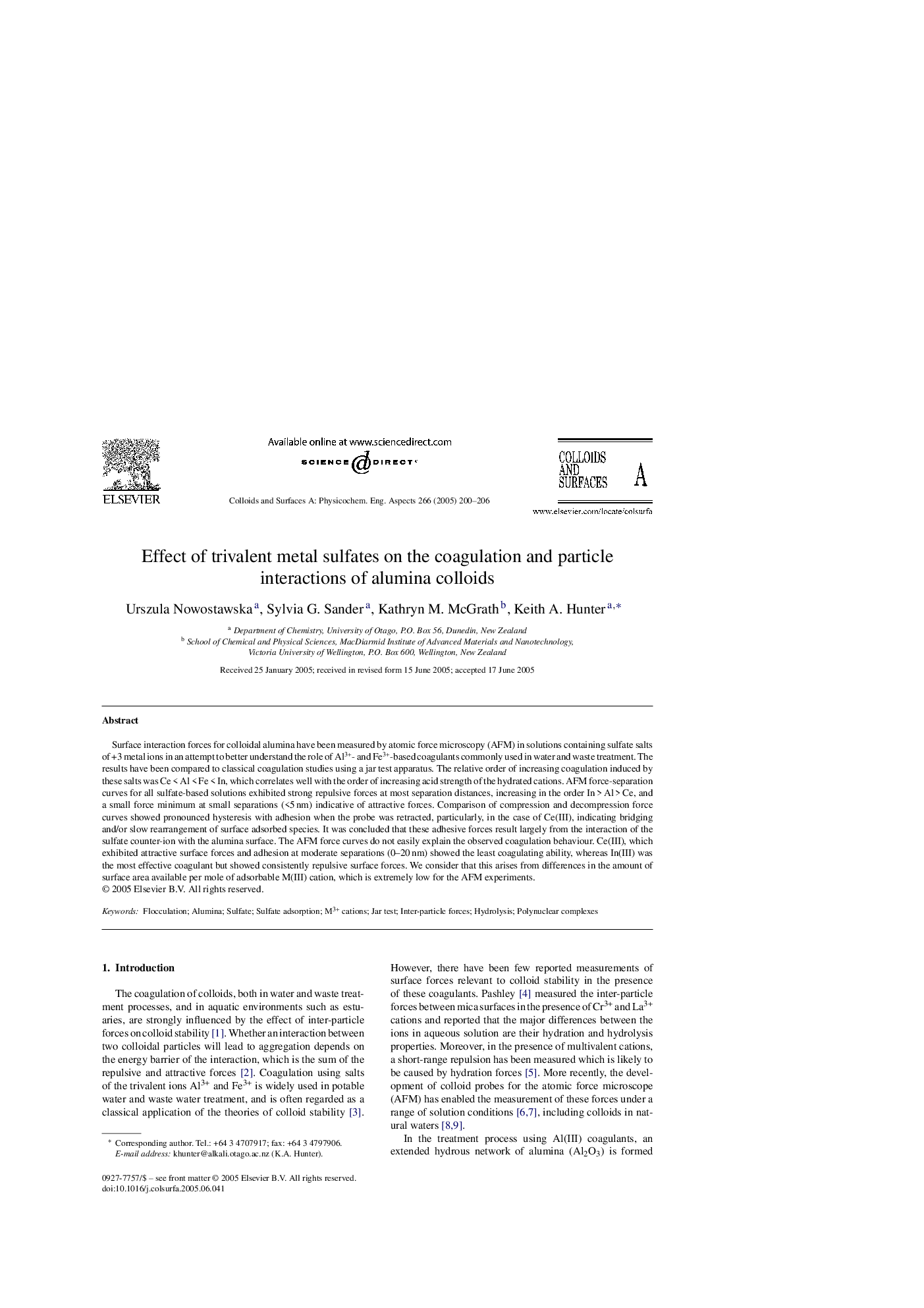| Article ID | Journal | Published Year | Pages | File Type |
|---|---|---|---|---|
| 9675669 | Colloids and Surfaces A: Physicochemical and Engineering Aspects | 2005 | 7 Pages |
Abstract
Surface interaction forces for colloidal alumina have been measured by atomic force microscopy (AFM) in solutions containing sulfate salts of +3 metal ions in an attempt to better understand the role of Al3+- and Fe3+-based coagulants commonly used in water and waste treatment. The results have been compared to classical coagulation studies using a jar test apparatus. The relative order of increasing coagulation induced by these salts was Ce < Al < Fe < In, which correlates well with the order of increasing acid strength of the hydrated cations. AFM force-separation curves for all sulfate-based solutions exhibited strong repulsive forces at most separation distances, increasing in the order In > Al > Ce, and a small force minimum at small separations (<5 nm) indicative of attractive forces. Comparison of compression and decompression force curves showed pronounced hysteresis with adhesion when the probe was retracted, particularly, in the case of Ce(III), indicating bridging and/or slow rearrangement of surface adsorbed species. It was concluded that these adhesive forces result largely from the interaction of the sulfate counter-ion with the alumina surface. The AFM force curves do not easily explain the observed coagulation behaviour. Ce(III), which exhibited attractive surface forces and adhesion at moderate separations (0-20 nm) showed the least coagulating ability, whereas In(III) was the most effective coagulant but showed consistently repulsive surface forces. We consider that this arises from differences in the amount of surface area available per mole of adsorbable M(III) cation, which is extremely low for the AFM experiments.
Keywords
Related Topics
Physical Sciences and Engineering
Chemical Engineering
Colloid and Surface Chemistry
Authors
Urszula Nowostawska, Sylvia G. Sander, Kathryn M. McGrath, Keith A. Hunter,
